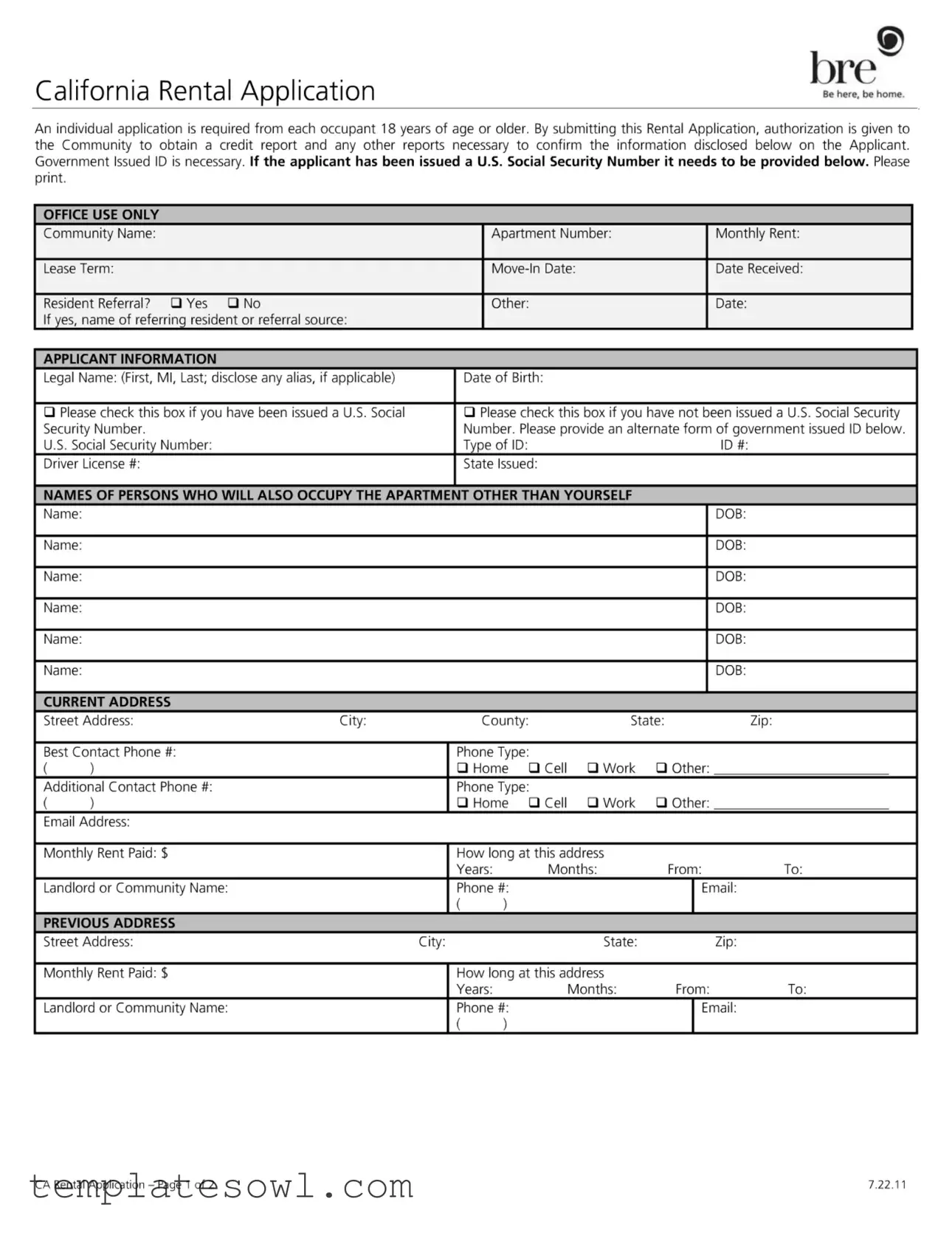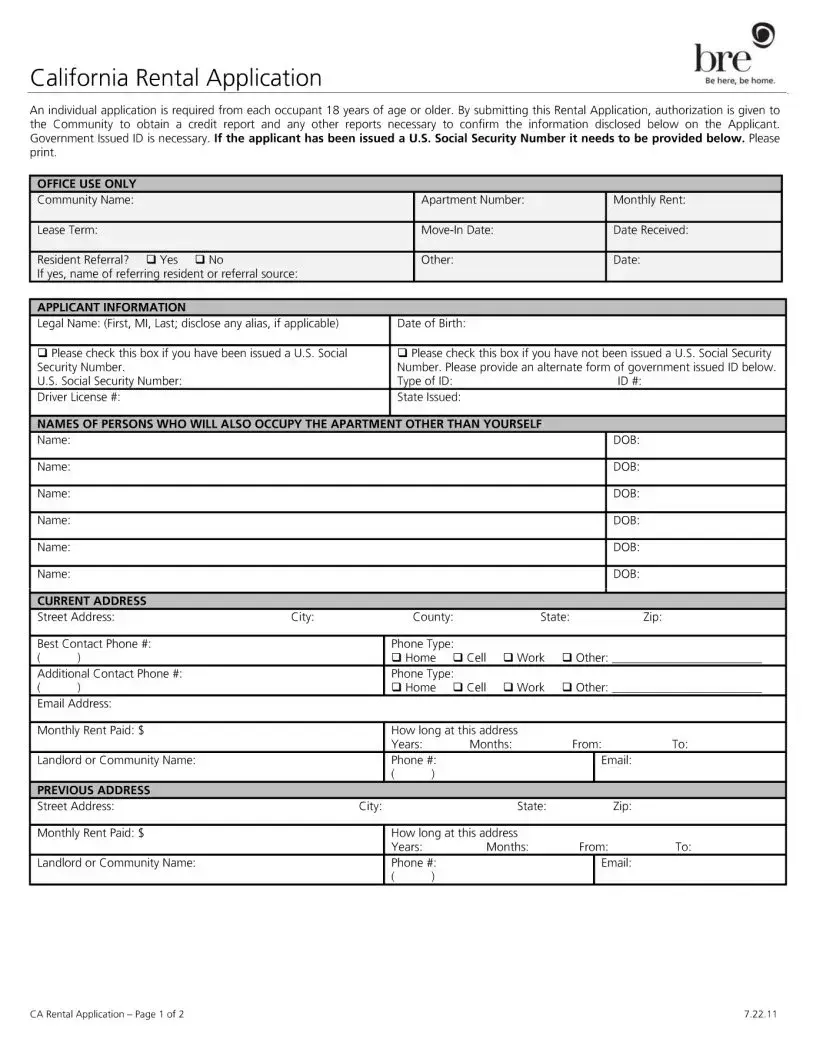What is the purpose of the California Rental Application form?
The California Rental Application form is designed to collect essential information from potential tenants. Each occupant who is 18 years or older must fill out an individual application. The information provided helps property management verify the applicant's identity, credit history, and ability to pay rent, ensuring a suitable match for the community.
What information do I need to provide on the application?
Applicants will need to supply a range of information, including legal names, Social Security numbers, contact details, current and previous addresses, employment information, and additional occupant details. It is crucial to include a government-issued ID and any income proof when requested. This information will be used to assess the application thoroughly.
Do I need a U.S. Social Security Number to apply?
While having a U.S. Social Security Number makes the process more straightforward, it is not mandatory. If you do not have one, you can check the designated box on the application. In this case, you will need to provide an alternative form of government-issued ID for identification purposes.
How is my application evaluated?
The evaluation process involves a review of your credit report, rental history, income verification, and any other relevant background checks. The property management team uses this information to determine your ability to meet the rental obligations and maintain a positive living environment.
What happens if I have a poor credit score or rental history?
A poor credit score or negative rental history may influence the application outcome. However, it does not automatically disqualify you from securing a rental. Additional factors such as income, employment stability, and references are also taken into account. Transparency about your history during the application can be beneficial.
Can I apply if I have pets?
Yes, you can apply even if you have pets. The application requires specific details about your pets, such as their type, breed, color, and weight. Be sure to accurately complete this section, as pet policies vary and may affect your application process.
Will I need renter's insurance?
Yes, renter's insurance is required before you move in. This insurance provides protection for your personal belongings and liability coverage, making it a critical step for responsible renting. Ensure you research different policies to find one that meets your needs before your move-in date.
What if my employment history is less than one year?
If your current employment history is less than one year, you will need to provide details of your previous employer. This ensures that property management has a comprehensive view of your employment stability and income, thus facilitating a thorough evaluation of your application.
How confidential is my information?
Your information is kept confidential and will be used solely for the purpose of evaluating your rental application. Property management is obligated to protect your privacy and handle your information securely, in compliance with relevant privacy laws.


